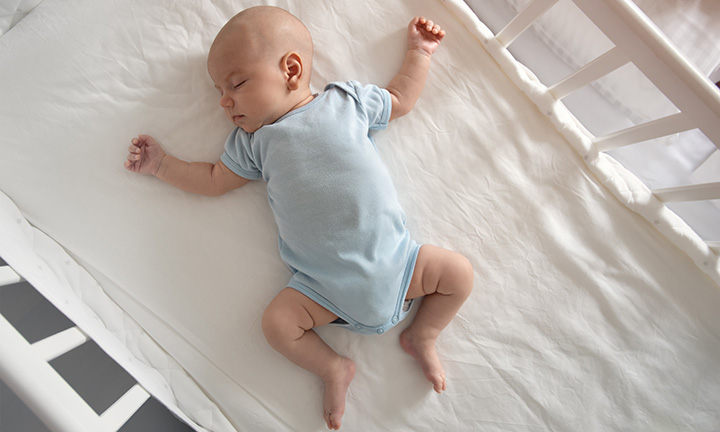Welcoming a newborn into your life is a joyous occasion, but it also comes with a host of responsibilities, especially when it comes to their safety and well-being.
One crucial aspect of infant care is ensuring that your baby sleeps safely, reducing the risk of sudden infant death syndrome (SIDS) and other sleep-related incidents.
In this article, we’ll discuss safe sleeping positions for newborns to help you provide a secure and comfortable sleep environment for your little one.
Why Safe Sleeping Matters
The first few months of a baby’s life are marked by frequent sleep, and creating a safe sleeping environment is paramount. Here’s why safe sleeping positions are crucial:
- Reduce SIDS Risk: Sudden Infant Death Syndrome (SIDS) remains a concern, and safe sleeping practices can significantly reduce the risk.
- Prevent Suffocation: Newborns are not yet capable of rolling over or adjusting themselves if they have difficulty breathing. Safe sleeping positions help prevent accidental suffocation.
- Promote Healthy Development: Proper sleeping positions can also promote healthy physical development, preventing issues like flat head syndrome (positional plagiocephaly).
Safe Sleeping Tips for Newborns
- Back to Sleep: The American Academy of Pediatrics (AAP) recommends placing your baby on their back for every sleep time, including naps and at night. This position significantly reduces the risk of SIDS.
- Use a Firm Sleep Surface: Ensure that your baby sleeps on a firm mattress in a crib or bassinet designed for infants. Avoid soft surfaces like couches, armchairs, or adult beds.
- Clear the Crib: Keep the crib free of pillows, stuffed animals, blankets, and bumper pads. These items can pose suffocation hazards.
- Keep the Room Comfortable: Maintain a comfortable room temperature for your baby, and dress them in light, breathable layers. Overheating can increase the risk of SIDS.
- Avoid Co-Sleeping: While some parents choose to co-sleep, it’s generally safer for newborns to sleep in their own crib or bassinet. If you do co-sleep, ensure it’s done safely, following guidelines to reduce risks.
- Offer a Pacifier at Naptime and Bedtime: Research suggests that offering a pacifier at naptime and bedtime can reduce the risk of SIDS. If you’re breastfeeding, wait until breastfeeding is established before introducing a pacifier.
- Supervised Tummy Time: While back sleeping is recommended for sleep, supervised tummy time while your baby is awake can help with their physical development.
- Check on Your Baby: Always check on your baby during sleep, but avoid disturbing them unless necessary. A quick peek to ensure they’re safe is sufficient.
Conclusion
Creating a safe sleeping environment for your newborn is a fundamental aspect of infant care.
By following these guidelines for safe sleeping positions, you can significantly reduce the risk of SIDS and provide a secure and comfortable sleep space for your baby.
Remember that every baby is unique, and it’s essential to adapt these practices to your child’s specific needs.
Prioritizing safe sleep will give you peace of mind and contribute to your newborn’s healthy development during those precious early months.

